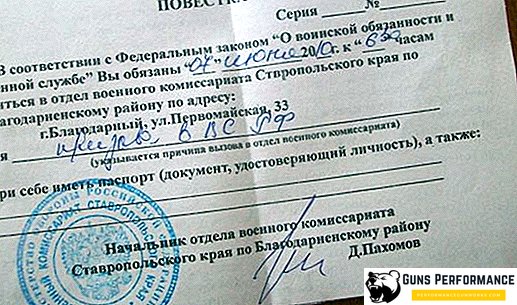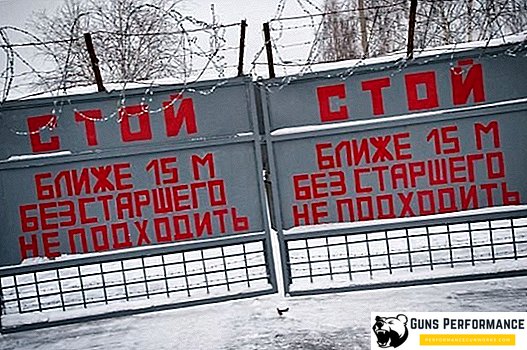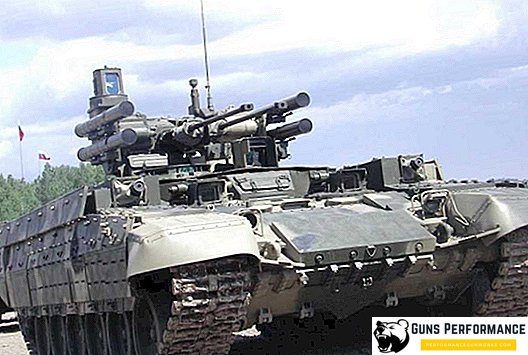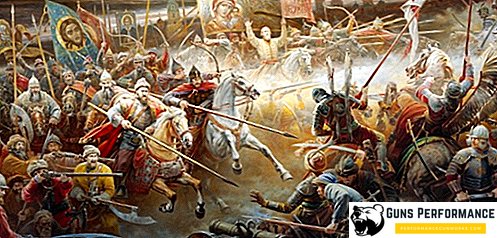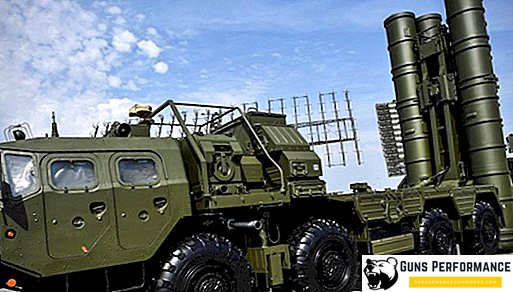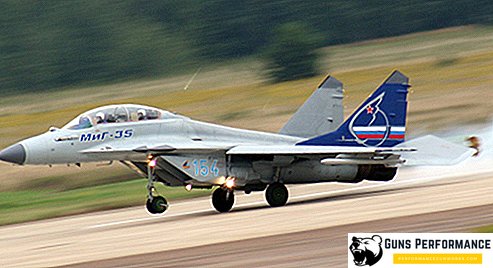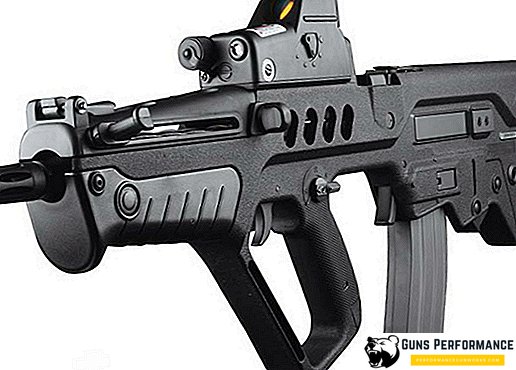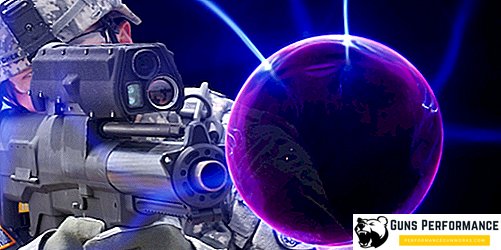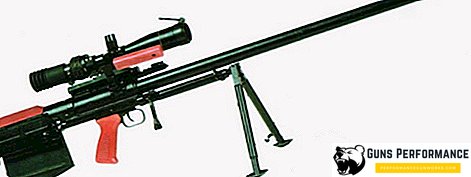
The wars of recent decades, as a rule, are local. In such conflicts, sniper fire plays a particularly important role.
In general, it should be noted that over the past hundred years the firepower of the units has grown continuously. In the first half of the 20th century, this was due to the saturation of the troops with automatic and semi-automatic weapons instead of the shop, using light machine guns as a means of fire support. However, later, the experience of real combat operations showed that even a multiple increase in the rate of fire of an individual fighter no longer affects his effectiveness. It is necessary to replace the quantity with quality. That is why in the infantry units begins to grow the number of skilled shooters, armed with rifles with optical sights. The experience of real hostilities has shown that sniper fire can inflict enormous damage on the enemy.
The real "trend" of the last twenty years is widespread in the army and special units of large-caliber long-range sniper weapons. The most famous representatives of this class of weapons are rifles of the American company Barrett, although many experts consider their accuracy and accuracy as insufficient.
A few years ago, the Russian army was armed with a 12.7-mm rifle "Kord", which, at least, is not inferior to Western counterparts.

Work on the creation of the domestic large-caliber sniper complex began in the mid-90s. They were engaged in the plant them. Degtyarev (Kovrov) and designers of the special design bureau of the Kovrov plant. The first sample of a rifle chambered for a caliber of 12.7 mm, made according to the "bullpup" scheme, was ready in 1998. However, she did not go to the series. Only in 2004, after several years of refinement and testing, the large-caliber sniper rifle NEA (large-caliber army sniper rifle) was put into mass production. In 2013, ASVK as part of the sniper complex 6S8 "Kord" was adopted.
In addition to the ASVK rifle itself, it also includes a special sniper cartridge 7H34 and various types of sights. The Kord complex is designed to defeat enemy vehicles at distances of up to 1 thousand meters, its tactical and technical characteristics (TTX) make it possible to hit manpower at a distance of 1.5 thousand meters. In addition, this rifle is a great "antisniper" means.
The rifle was used during the Second Chechen campaign. Currently, the ARMS is in service with the LC / DNR units and is actively used during the conflict in the eastern regions of Ukraine.
Back in the 1980s, in many armies of the world, large-caliber sniper rifles, capable of hitting targets at distances of 1 km or more, began to be adopted. Such weapons had several important advantages that were appreciated by the military. First, such a weapon can effectively strike the enemy at considerable distances, without exposing servicemen to danger of being returned fire. And secondly, large-caliber sniper rifles are a very effective and inexpensive combat tool for destroying the enemy’s lightly armored vehicles and its other material objects: radar antennas, anti-tank systems, artillery systems, and others. .

As mentioned above, work on the creation of a new domestic sniper complex chambered for 12.7 mm began in 1996 at the plant. Degtyarev. A whole group of designers led by Vyacheslav Negrulenko worked on this project.
A standard 12.7 × 108 mm machine gun cartridge was not very suitable for accurate shooting, so the development of a special sniper cartridge began simultaneously with the rifle at TsNIITochmash.
In 1998, a rifle was created, which received the designation SVN-12.7, which was soon replaced by the SVN-98. The weapon went into an experimental series.
Unlike the majority of domestic sniper rifles, which, as a rule, were self-loading, the SVN-98 had a manual reloading. In addition, the developers used the bullpup layout scheme, which was unusual for a weapon of this class. With this they provided the rifle with minimum dimensions: the length of the weapon was reduced to 1420 mm. Existing at the time analogs with the classical layout scheme, had a length of 1700 mm and more. Significant was the gain in the mass of weapons: in foreign large-caliber rifles, it is often 20 or even 30 kg. The mass of the Kord rifle without cartridges and an optical sight is only 12.5 kg.
In fact, the creation of the SVN-98 was only the beginning of a rather long history, stretching for years. The process of finishing the complex turned out to be extremely difficult and it was completed only in 2013. It also affected the lack of the necessary experience of the developers, and all the new requirements that were put forward GRAU.

In 1998, the SVN-98 rifle underwent a complex of tests, the results of which resulted in a decision to finalize the weapon.
In 2000, the same design team presented an already modified version of the weapon, which received a new designation - KSVK. Like its predecessor, the KSVK sniper rifle was launched into an experimental series.
After tests and improvements in 2004, the rifle received its final appearance and the fourth in a row name - KAFK, as well as its own name "Kord". Its refinement lasted until 2013, when the complex was put into service and received an index of the Grau.
The Kord large-caliber sniper rifle is a non-self-loading large-caliber weapon made according to the bullpup layout. Rifle ammunition is made from a box-shaped detachable magazine with a capacity of five rounds. DIA uses cartridges of 12.7 × 108 mm.

The warranty life of the NDT sniper rifle is 3 thousand shots, but with careful care and regular cleaning, the barrel is able to withstand 4.5 thousand shots.
The neck for installing the magazine is located between the plastic pistol grip and the butt of the weapon. For the convenience of holding weapons, the front of the store is equipped with a special plastic lining. The cartridges are fed into the receiving window by a pusher driven by two flat springs. Extraction of sleeves produced through a window in the receiver, which is located on its right side. When carrying a rifle, it closes the lid.
"Cord" - a rifle with a rotary sliding bolt. The reload handle is located in front of the pistol grip. It is quite massive, because with its help you have to move a rather heavy cartridge. When reloading the handle rotates ninety degrees. USM rifle hammer type, it allows you to conduct only a single fire.
The rifle has a two-position flag-type fuse, which is located on the receiver between the bolt and the neck of the magazine receiver. In the closed (upper) position, it additionally fixes the lid that closes the window for the ejection of the sleeves. The trigger bracket has dimensions that allow you to fire with gloves.
"Cord" has a heavy long barrel: 1000 mm with a total rifle length of 1420 mm. It cantileverly fixed in the receiver and does not apply to other structural elements of the weapon ("floating type"). The barrel of a rifle is made by cold radial forging. It is equipped with a powerful muzzle brake-flame arrester, which reduces the recoil of the weapon in more than two times. Initially, the muzzle brake had a cylindrical shape; in the process of finalizing the weapon, it changed its shape and design several times. Under the barrel are folding bipod, which are attached to a special stem of the receiver. When carrying a weapon, they fold forward.
On top of the receiver is a handle for carrying weapons, it is located near the center of mass of the weapon. In order not to interfere with the installation of optical sights, it is deflected to the right from the central axis of the rifle. To attach the sights used standard strap located on the left side of the receiver.
The butt plate is covered with a special porous material that performs the function of a shock absorber, which partially absorbs recoil. The shooter can make several dozen shots from the “Kord” without experiencing any discomfort in the shoulder.
On the upper part of the receiver is placed a special unregulated wooden lining - "cheek".

The rifle has an open sights, consisting of a pillar and a front sight, usually the weapon is equipped with a day sight optical "Hyperon" or night sight 1P1111. Although, the standard bracket allows you to mount on the rifle and other sights, both domestic and foreign production. Initially (on the SVN-98) optical sighting devices were attached to a special bar, which also served as a handle for carrying weapons. But then they refused such a decision.
Especially for Kovrov rifles of 12.7 mm caliber, 7H34 sniper cartridges were developed, although this weapon can use standard ammunition 12.7x108 mm. It is clear that when firing conventional ammunition accuracy of the weapon decreases.
An ordinary B-32 bullet is quite capable of piercing a standard army body armor at a distance of 2 thousand meters, which is the maximum for this rifle. The target range of AITC is 1.5 thousand meters.
At distances up to 1 km, a rifle bullet is capable of hitting lightly armored targets. When firing conventional (not sniper) cartridges, the dispersion diameter is 160 mm at a distance of 300 meters.
For such important indicators as accuracy and accuracy, the Kord large-caliber rifle is in no way inferior to its counterparts from Europe, the USA and South Africa. The rifle turned out to be reliable and simple, the feedback on its operation in real combat conditions is positive.

The Kord rifle is a serial weapon. In the units it can come in two sniper complexes. The first, except for the 6B7 rifle itself, includes a 1P71 optical sight and a 1P1111 night sight, as well as a 7H34 cartridge. The GRAU index of this complex is 6S8. The second is lightweight, in its composition no night sight. His index - 6S8−1.
Below are the main characteristics of the sniper complex ASVK:
- caliber, mm - 12.7;
- weight with a magazine (without cartridges) and without an optical sight, kg - 12.5;
- weapon length, mm - 1420;
- barrel length, mm - 1000;
- initial speed of a bullet (for a 7H34 cartridge), m / s - 770−785;
- range of sight with an optical sight, m - 1500;
- reloading mechanism - manual;
- magazine capacity, patr. - five.




